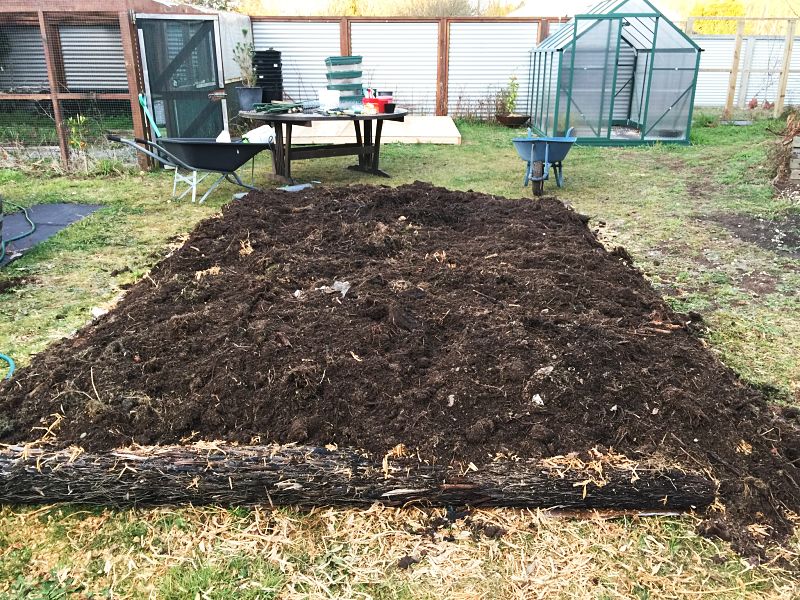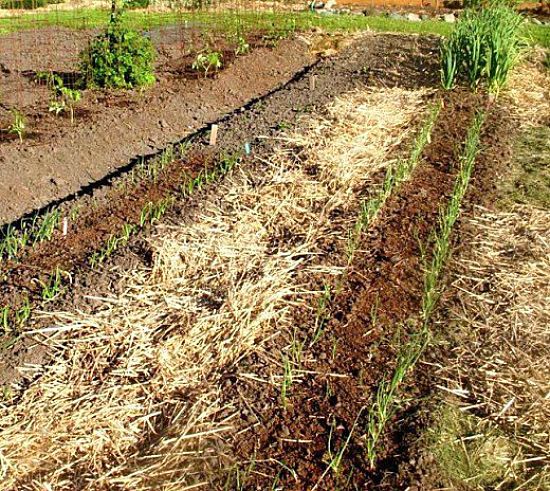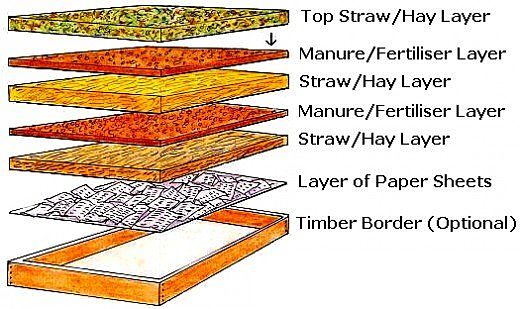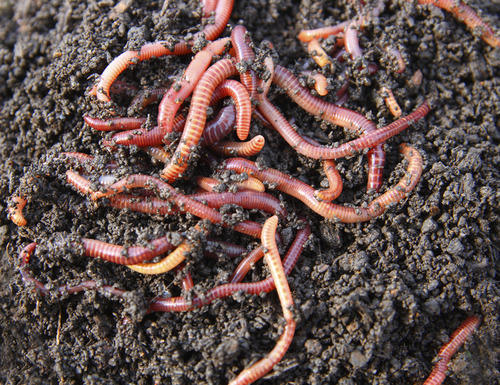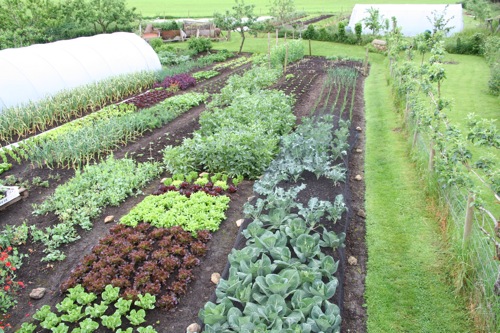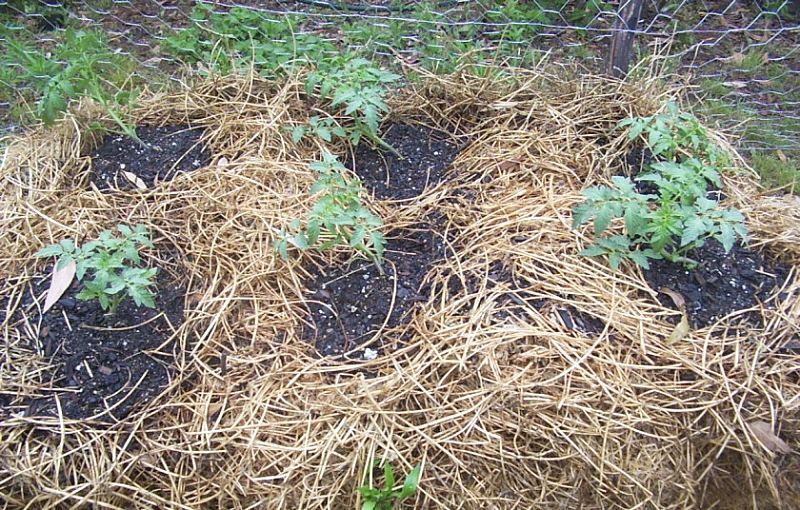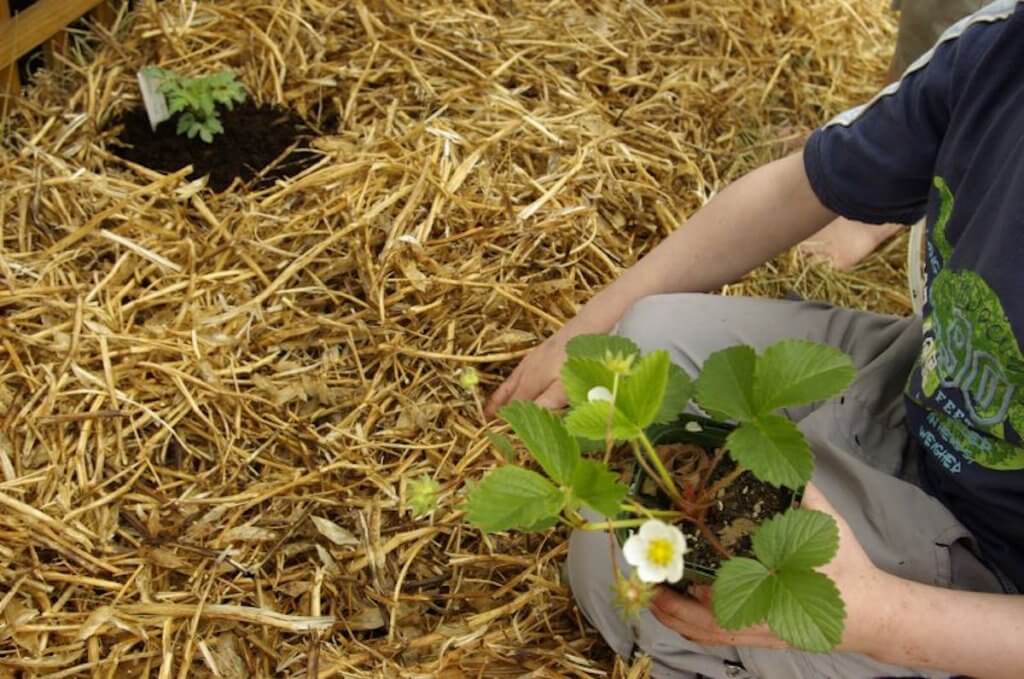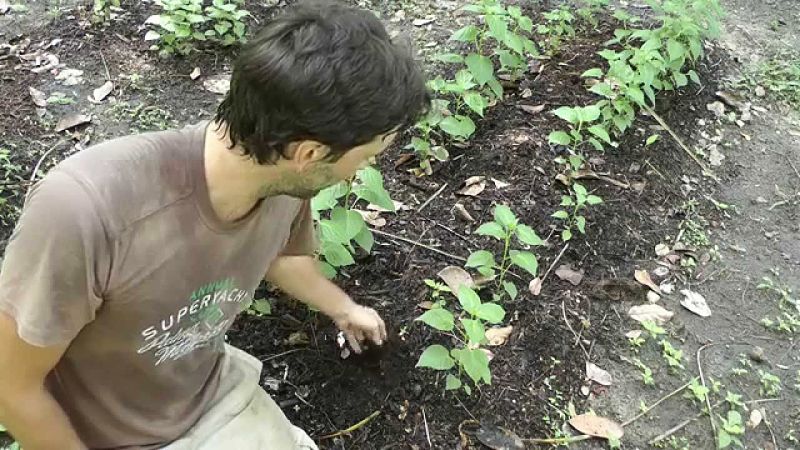Starting a New Garden the No Dig Way using in-Garden Composting and Potatoes
Composting is a very popular way to break down organic waste materials such as lawn clippings, leaves, branches and kitchen scraps. Many people have compost bins which are expensive and hard to manage. But have you considered doing the composting right in the garden bed? All you need to do is to pile the organic matter up into trenches between your rows of vegetables, flowers or other plants.
If you are energetic you can dig a shallow trench and progressively fill it in with the organic debris and cover it with soil. Why waste time and energy loading the stuff into the compost heap and then having to use a spade and wheel-barrow to collect it an load it onto the garden once it has been broken down? Do the composting in the garden bed, right where it will have immediate benefits.
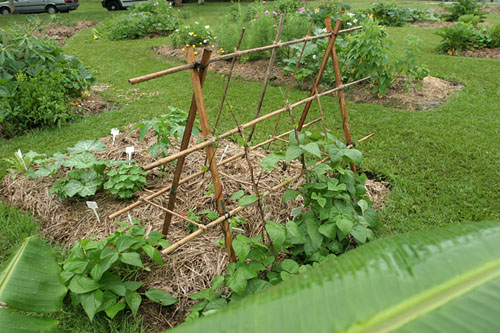
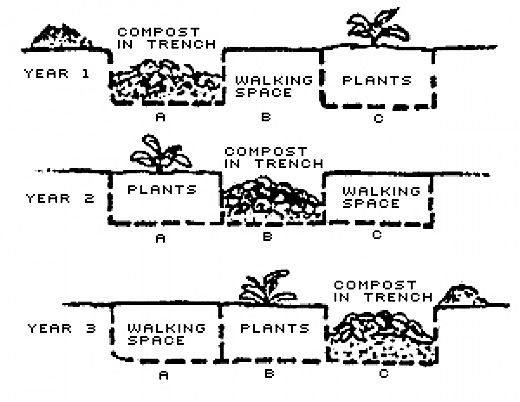
In-situ or in-Garden Composting enhances the soil structure, encourages worms, works as mulch to control weeds, and it means that the nutrients and organic matter are added directly to the soil in your garden bed. This is a Permaculture idea.
In Garden Composting
If you have chickens, in-situ composting encourages them to scratch around in the garden itself turning the mulch over, and adding fertiliser (chook-poo) directly to the soil.
The in-situ composting method can be applied to starting a new vegetable garden from scratch - establishing it directly on bare ground or on a patch of mown grass. The method is just perfect for tough clay or poor sandy soils and can be used on virtually all non-garden surface such as lawn, waste grounds, paths or even concrete. The method eliminates the need for any backbreaking work digging and preparing the soil - this is left to the roots of the plants and the hard working worms.
It is basically an above ground garden plot, constructed of layers of manure, fertiliser and organic matter forming a well aerated compost heap that rots down into a nutrient-rich living soil with a complex ecosystem and excellent structure. It is much like making a 'lasagna' adding layer upon layer until the desired thickness is achieved.
No-dig gardening is like composting.
All you require is a good source of organic carbon in the form of hay, shredded paper or straw, and nitrogen in the form of fertilisers or manures. Each layer needs to be watered lightly as it is added because the compost and garden needs moisture to function properly.
Potatoes are ideal as a first crop because they can be planted directly into the new garden - there is no need to wait. The no dig garden and potatoes are ideal for kids, as theycan peer inside to see the new potatoes as they grow. Kids can directly collect them from the garden and small new potatoes. There is no need wait to collect the entire crop and store them - you can harvest them as you go ( another permaculture principle).
The combination of weed-control, in-situ composting and crop of potatoes develops the soil and makes it suitable for all sorts of vegetables and flowers in follow-up plantings.
No Dig, Minimal Effort, Its Fun!
What you Need
- Spade - Whoops! No forget this, you won't need a spade.
- No Dig Kids are good - they will love to be involved.
- Lucerne hay, pea-straw, straw, or crop-straw like rye or canola, whatever is cheap and available. You may be able to collect waste straw from you local riding school or stables (this is ideal). You will need a volume of 30-50 cm (12-20 inches) of loose material. If you have bales of hay or straw you will need enough bales to cover about a quarter of the area. You an use compost, carpet underlay, even carpet, cardboard, shredded paper anything organic that can be bused as a compost starter.
- Manure or blood-of bone.
- Seed Potatoes
- An hour or so of your time
Steps for Creating Your New Garden
Step 1. Mark out the area and edge it with bricks, timber, logs or any other material that will define the borders of the garden and contain the soil when it is built. You can no have a border if you like, and the garden will simply become a mound. Two by two, or three by three metres or yards, is a good size to start, but this can be expanded later. Long rectangular beds are ideal for an above-ground garden as you can work the garden and pick the crop without getting you feet or boots dirty. If you are starting the garden on an area of lawn or grass (weeds) try to mow the area first or flatten the weeds so that they are no higher than an inch or 2-4 cm ( 1-2 inches). You needs to be able to cover the area with a blanket of newspaper to stop the grass or weeds from growing up through the compost layers.
Step 2. Cover the entire area with layers of newspaper. Make overlapping layers of 2-3 pages of newspaper. Don't put whole newspapers onto the bed that have not been opened out as this will inhibit the worms and stop drainage. Aim for a thickness of 5-10 mm or making sure that there are no gaps for weeds to grow through, and avoid using coloured print as much as possible. Water the area newspaper well so that it beds down and smothers the weeds - very satisfying!!. You can use carpet underlay, even carpet, cardboard, shredded paper - anything that is porous, breaks down to yield organic carbon and can smother the weeds. A blanket covering - Done!
Step 3. Cover the area covered with paper with a 5-10 cm (2-4 inches) layer of hay, straw or shredded paper.You could also use crop-straw, pea-straw or other straw from crops like rye or canola.
Step 4. Place seed potatoes (not supermarket ones), or pieces of potato with eyes showing, directly onto this layer of compost. Locate them exactly where you want them to grow. Generally space them about 10-15 cm (4-6 inches) from each other and cover the entire area.
Step 5. Next apply a thin layer of manure or fertiliser. Chicken manure is excellent because it has high amounts of nitrogen, but any type of farm manure will be OK. Try to avoid manure that is full of weed seeds. You could also use blood and bone or another organic fertiliser.
Step 6. Add another 10 cm (4 inch) layer of loose hay or straw, then another layer of manure or fertiliser.
Step 7. Add one more layer of straw and manure, and top with straw. Water the new mound with water lightly. Of course you can use as many layers as you like. Aim for a mound that is about 40-60 cm (15-25 inches) thick. It will quickly pack down as the straw is compressed by watering.
Conclusion: You will now have created a new garden bed which is effectively and in-situ compost mound. The potatoes will love it and the shoots will soon spread upward and pop out the top. The plants will send out lateral shoots into the mulch layers on which the potato tubers will grow. You can check on progress simply by lifting the straw later near a plant. Or you can progressively harvest the small tubers as they grow. The entire crop will be ready for harvest in weeks. Gentle insert a garden fork beneath each plant to expose the potato tubers.
The new garden will attract worms which will build an ideal soil structure. The roots of the potato plants will do the same thing. After the potatoes the soil will be ready for more deeply rooted plants such as sweet corn, tomatoes and cabbages etc. The mulch will keep weeds at bay. It is a good idea to add fresh layers of organic matter to build up the mulch. You can also add kitchen scraps to feed the worms.
After several crops you will have a garden that can grow virtually anything. Applying permaculture techniques which can be very rewarding and require very little work once established.
Why strain to dig a conventional garden when there are millions of worms ready, willing and able to do the work for you?
This method is wonderful for teaching children about gardening and about how vegetables are grown. So why not get out there today, and grow your own potatoes and create a garden the easy way.
ENJOY
